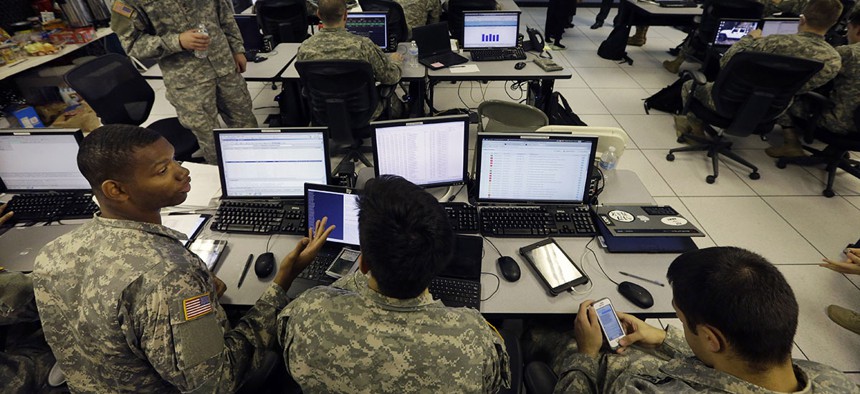Russia’s Spear Phishing Tactics in the 2016 Election Are Boring Compared to Its 2008 Hack of the US Military

Mel Evans/AP
Long before the world knew the contents of Hillary Clinton staffers’ inboxes thanks to Russian hackers, the country went after an even bigger US target.
Long before the world knew the contents of Hillary Clinton staffers’ inboxes thanks to Russian hackers, the country went after an even bigger US target, in a movie-worthy plot documented in Fred Kaplan’s 2016 book Dark Territory: The Secret History of Cyber War and highlighted in a New Yorker article earlier this month.
On Oct. 24, 2008, engineers noticed something awry in the networks of US Central Command (CentCom), the operational force behind the wars in Afghanistan and Iraq. Wrote Kaplan:
A beacon was emitting a signal, and it seemed to be coming from inside CentCom’s classified computers. This was not only strange, it was supposedly impossible: the military’s classified networks weren’t connected to the public Internet; the two were separated by an “air gap” which, everyone said, couldn’t be crossed by the wiliest hacker.
And yet it had. A virtual intruder had inserted lines of malicious code, in the first successful attack of a US Department of Defense classified network.
How did hackers break into one of the world’s most heavily guarded systems? All it took was some cheap thumb drives, a lot of patience, and smart observations on the shopping habits of US service personnel.
At the time, a person needing to buy a thumb drive in Kabul, Afghanistan could find inexpensive ones at retail kiosks throughout the city. Russian intelligence agents noticed that US service members tended to buy computer supplies at kiosks near NATO’s Kabul headquarters. So, they pre-programmed a number of thumb drives with malware and then supplied them to the shops. Eventually, a US service member bought one and inserted it into a secure computer—just as the hackers hoped they would.
NEXT STORY: The Cyberwar Information Gap


